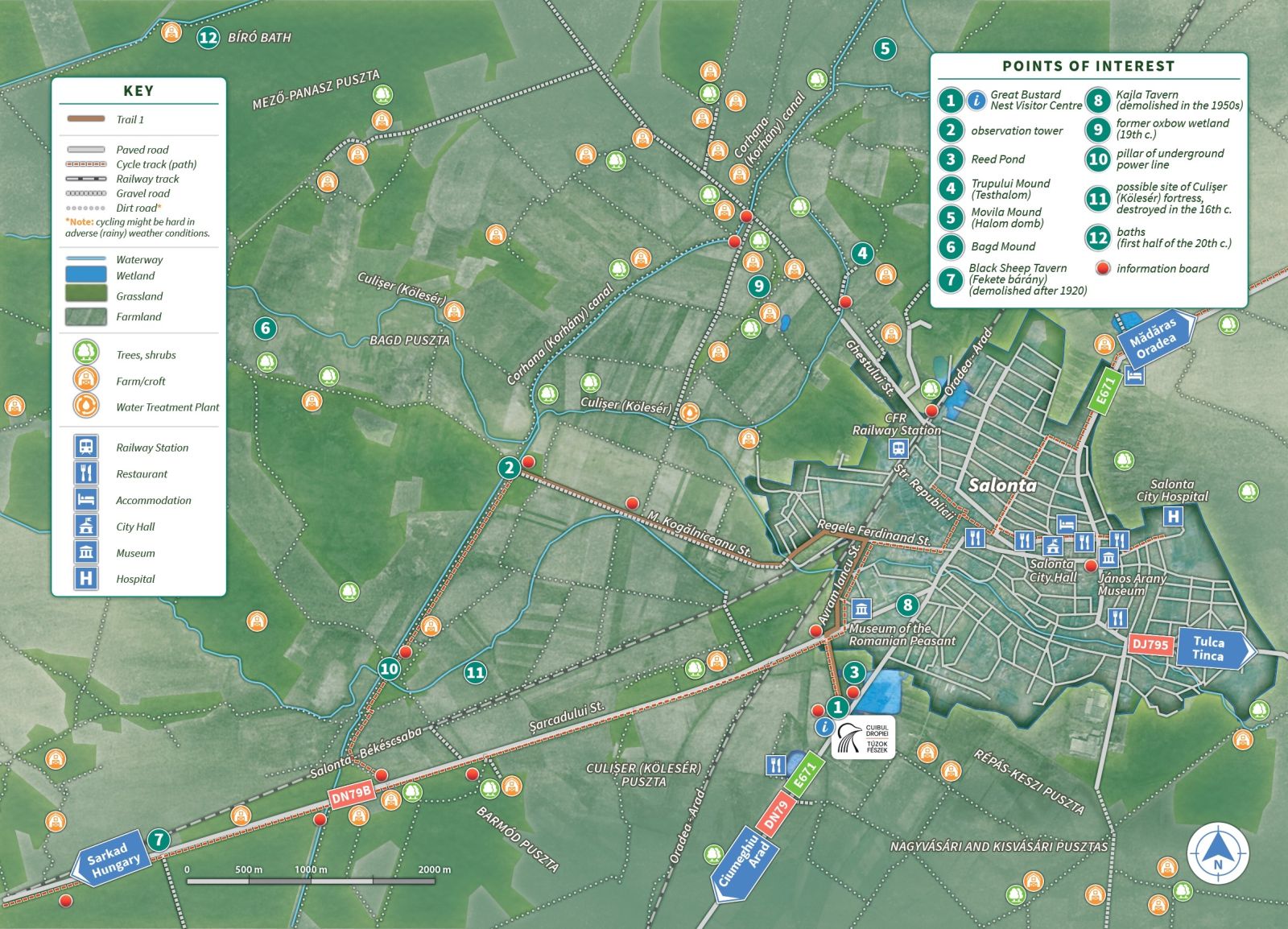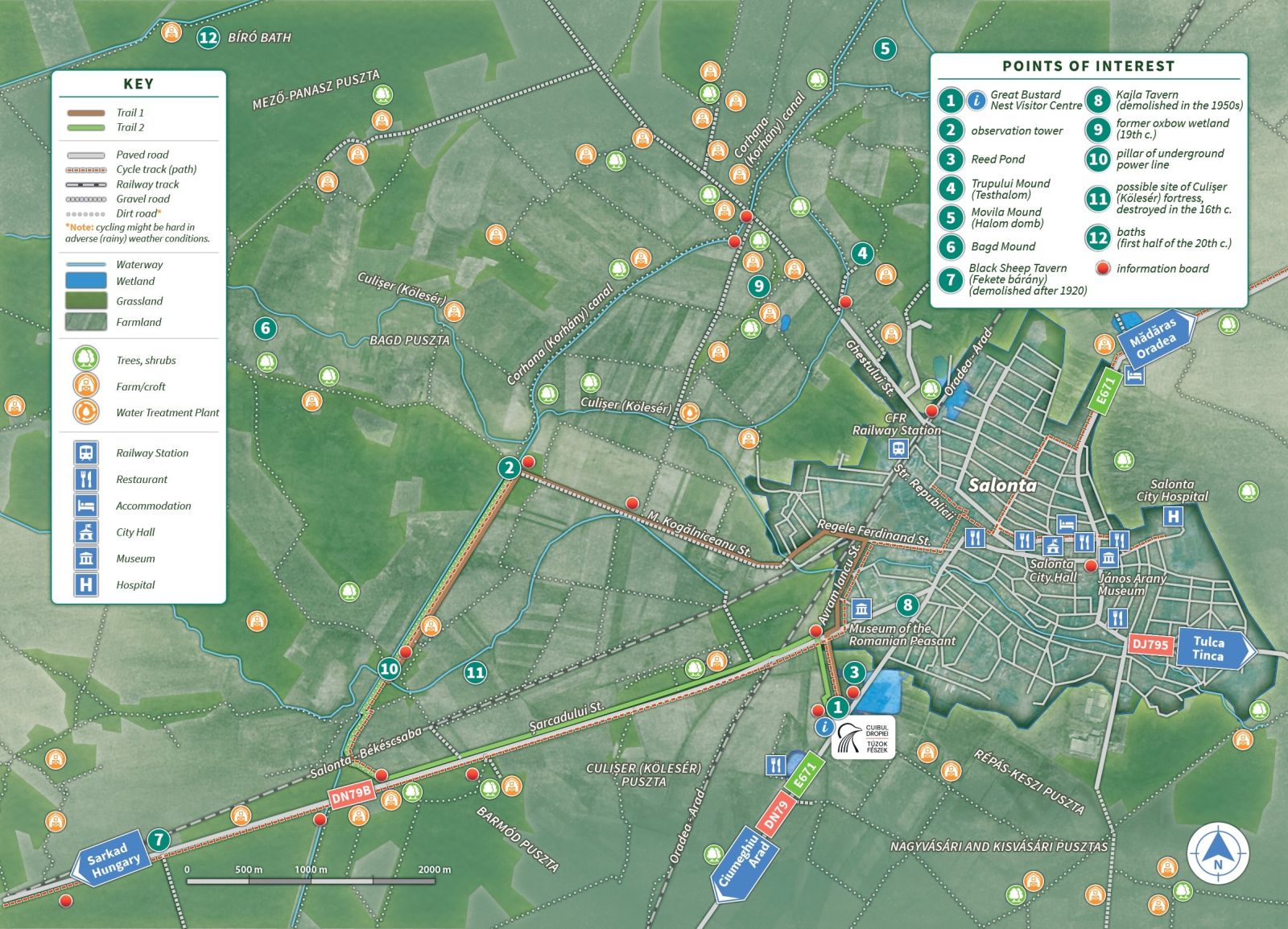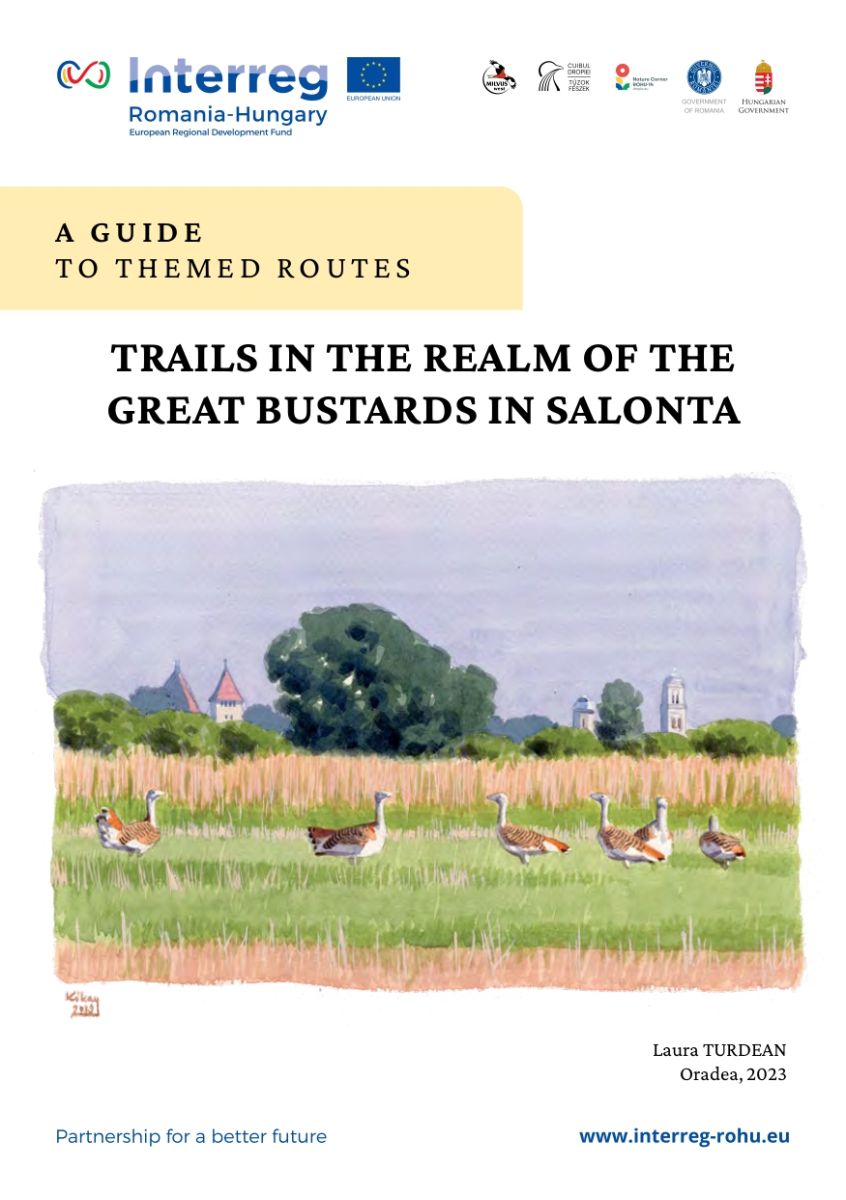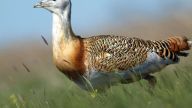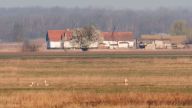The rehabilitation of the reed lake, a swamp that had become eutrophicated in the Culișer meadow, located in Salonta, Bihor county, has been carried out in the past 3 years within our project based on cross-border public-private partnership.
Trail 1: The Realm of the Great Bustard

Along the route, you will be able to observe the typical feeding, display and nesting grounds.

| Distance: | 6.6 km |
| Duration: | (one way): about 2hrs10’ (on foot) / 1h10’ (by bicycle) |
| Means of transport: | on foot, by bicycle |
| Starting point: | Great Bustard Nest visitor centre |
| Via: | observation tower |
| Destination point: | underground power line pilar |
| Download track: | Trail 1 [kmz] Trail 1 [gpx] Trails 1 + 2 [gpx] Trails 1+ 2 [kmz] |
The trail leads to a medium-voltage power line pillar, where more than 6-kilometre-long cables were moved underground to protect the bustards from potentially fatal collisions.
Highlights and points of interests: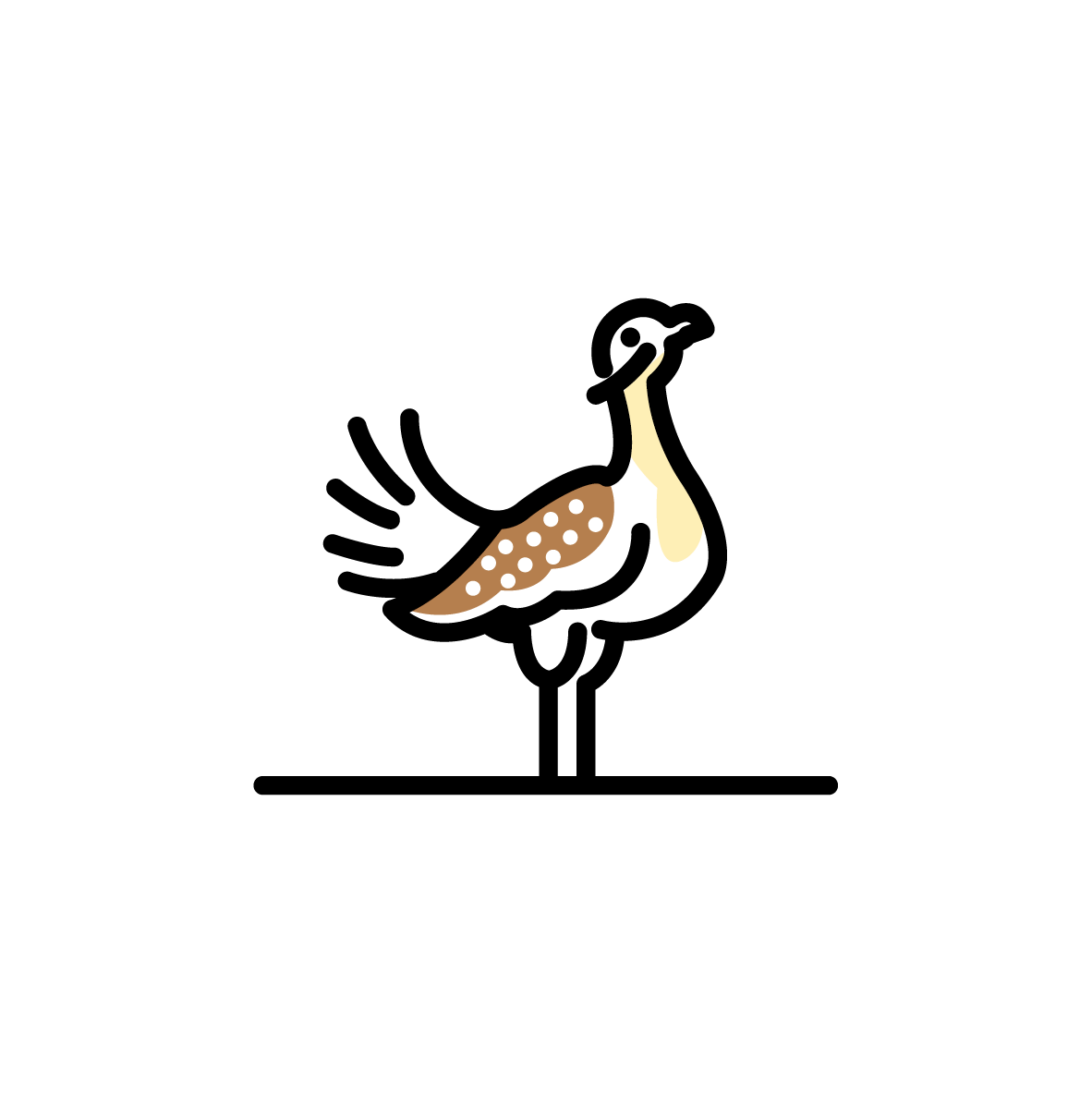
- >> The Great Bustard in Romania - From an Iconic Steppe Bird to a Symbol of Salonta
- >> Great Bustard Habitats: Feeding, Display and Nesting Grounds
- >> Threats and Conservation Measures
The Great Bustard (Otis tarda) is the heaviest flying bird in Europe. This iconic bird of the steppe, a globally Vulnerable species, has kept its last stronghold in Romania on the outskirts of Salonta. In the 20th century, the number of bustards dropped drastically mainly due to the fragmentation of their once vast habitat – the Eurasian Steppe. By the 1950s this species had disappeared from most parts of Europe. This also happened in Romania - where, after the nationalisation during the communist era, the grasslands (its natural habitats) were tilled and converted into croplands. Mechanised agriculture, hunting and poaching also contributed to their further decline.
Did you know? On 11 August 2022, the "List of priority (bird) species for conservation and species for which Romania bears a great responsibility" has been published in the Official Gazette of Romania. This is the first Red List of Birds in Romania. The Great Bustard, a globally threatened species classified as Vulnerable (VU), is considered a priority species in Romania and has been placed in the CR - Critically Endangered category.
On 11 August 2022, the "List of priority (bird) species for conservation and species for which Romania bears a great responsibility" has been published in the Official Gazette of Romania. This is the first Red List of Birds in Romania. The Great Bustard, a globally threatened species classified as Vulnerable (VU), is considered a priority species in Romania and has been placed in the CR - Critically Endangered category.
This species shows sexual dimorphism - the male is larger and heavier than the female, and during display (the spectacular courting ritual), males grow long whiskers and russet-coloured feathers around their necks. Females use grasslands, cereal crops or lucerne as their nesting grounds, and they are entirely alone in incubating and rearing the chicks. The hatchlings are very vulnerable in the first weeks, especially to mechanised agricultural operations, such as mowing.
As per the field monitoring observations that “Milvus Group” Association began in 2007, there is a small cross-border population of approximately 40-50 individuals that live near Salonta, and use territories on both parts of the border with Hungary. (see here a >> timeline on the status of the Great Bustard on the territory of today’s Romania)
Trails in the Realm of the Great Bustards in Salonta | Copyright © Milvus Transilvania Vest Association, 2023. All rights reserved. Data source: Google © 2023 CNES / Airbus | © Maxar Technologies | © Airbus
All data have been carefully inserted, yet we do not claim and cannot guarantee that these are unflawed. It was not possible to show all the roads, landmarks and points of interest on this map scale.
